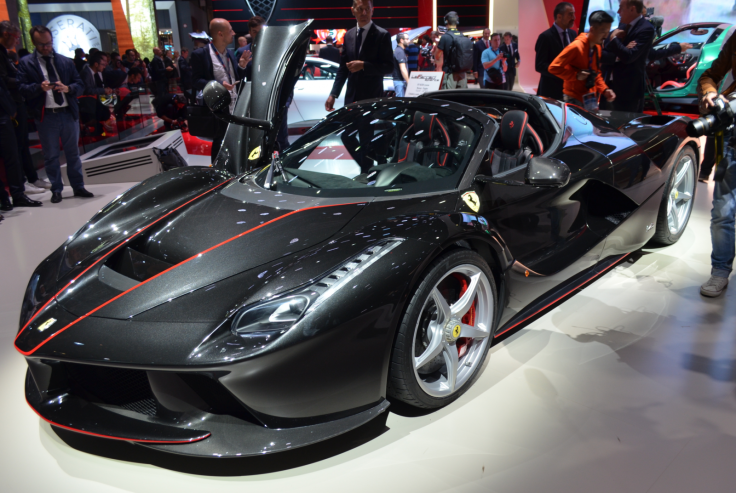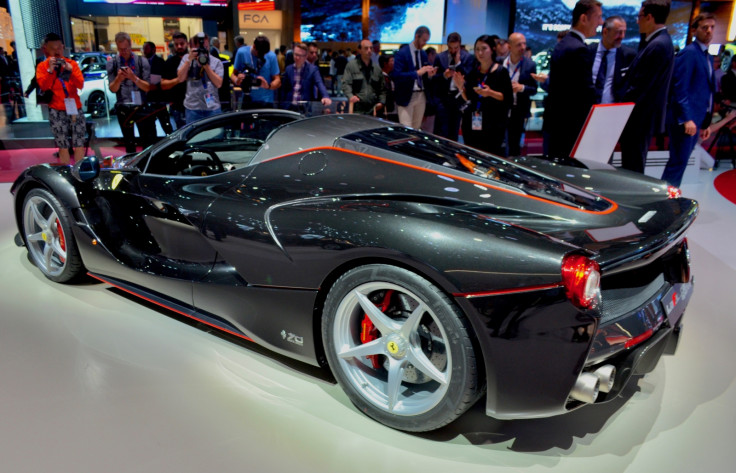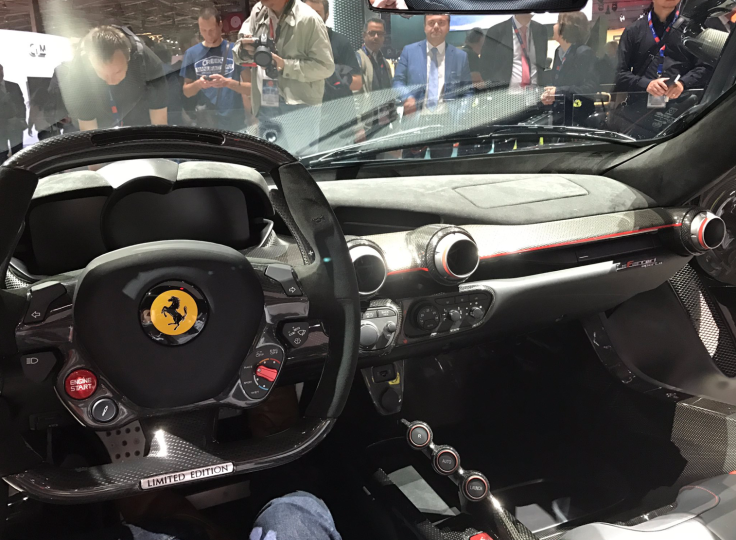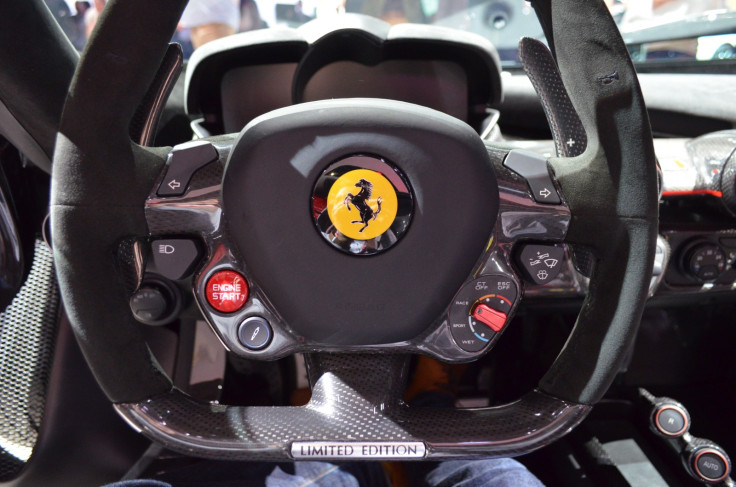Ferrari LaFerrari Aperta: Hands-on with the roofless £2m hypercar
We get to grips with the brand new Ferrari LaFerrari Aperta at the 2016 Paris Motor Show.
The star of the Paris Motor Show 2016 is arguably the LaFerrari Aperta, a convertible version of Ferrari's hybrid hypercar. Despite the halls full of electric Volkswagens and plug-in Porsches, it is all but impossible to ignore the glossy red stand of the world's most famous sports car maker.
IBTimes UK has toured the Ferrari stand, inspected its latest offerings and taken a seat in the £2m ($2.6m) LaFerrari Aperta. Here is everything you need to know.
Meaning 'open' in Italian, Aperta is the most apt way of describing the new LaFerrari. It is not a convertible as such, because unless you look up there's no real way of knowing you are in an open-topped car. Instead, the low seat and high sides make the Aperta feel more like a targa top when the roof panel is removed.
Of course, the sound of its wailing V12 engine and sensation of 200mph-plus wind rushing through your hair will be giveaways when the car is released from the confines of the motor show.

LaFerrari Aperta: What has changed?
Ferrari has strengthened the car's chassis to help it produce the same ride quality and handling performance as the fixed-roof model. The way the doors swing upwards has always been modified, as there is no longer a roof for them to hinge off. This has led to changes to both the wheel arches and front flanks. Ferrari claims the Aperta offers the same torsional rigidity as the original car.

A range of aerodynamic changes to the front end of the car ensure it creates a "similar" amount of drag as the original LaFerrari, even when the roof panel is removed. Hot air is directed away from the cabin to keep driver and passenger comfortable, while air reaching the A pillars and top of the windscreen is channeled into two vortices, reducing drag. To keep buffeting to a minimum, a wind-stop is fitted to the parcel shelf behind and between the two seats. This redirects high-speed air into internal spaces of the car's structure; the air is then slowed down and exits behind the seats.

LaFerrari Aperta: What remains the same?
That V12 is the same 6.3-litre unit found in the closed-cockpit LaFerrari, mated to an electric hybrid system and with a combined power output of 950 horsepower and "over 900" Newton metres of torque. Added to a kerb weight of 1,420kg (45kg more than the hard top) means a 0-62mph (100km) time of "under three seconds" and a top speed of "over 217mph". Ferrari does not like giving exact figures.
All that power is fed to the rear wheels via a seven-speed dual clutch gearbox and active aerodynamics help keep the car glued to the road.
LaFerrari Aperta: Sitting inside

Also unchanged is the car's enormous sense of drama. Sitting behind the rectangle wheel is an experience in itself, given the car doesn't technically have seats. Instead, padded material in the shape of seat parts are attached directly to the floor of the car; this removes the need for seat mounts, lowering the occupants and therefore the car's centre of gravity, improving performance. The steering wheel and pedals can be moved to accommodate for drivers of different heights.
The carbon fibre and Alcantara wheel is, as well all modern Ferraris, covered in buttons and switches. Everything from the engine start button and 'Manettino' dial for changing drive modes, to the indicators and wiper controls, is all right under your fingers and thumbs, like in a Formula One car.

The rest of the cabin is almost completely bare. The only displays are three directly in front of the driver (nothing to entertain your passenger, apart from that V12), and the centre of the car contains buttons for selecting reverse and launch control.
And now for the bad news... even if you have the spare £2m each LaFerrari Aperta costs, if Ferrari hasn't offered to sell you one then you are out of luck. All 209 examples have been sold.
© Copyright IBTimes 2025. All rights reserved.






















